MathPlot: A Minetest Mod for Plotting Mathematical Objects
Overview
Minetest is an open-source voxel game similar to Minecraft. I am excited about using this game as an educational tool, as it possesses some very important qualities:
- It is open-source, free to download / redistribute, and runs on a variety of operating systems. I was especially drawn to it for its Linux support.
- It is designed to be modded easily, with a flexible and well-documented lua API. True to the spirit of open-source software, one can study the code of existing mods and mimic their functionality.
So far, I've used this mod to explain triple integrals in Calculus III lectures, and I have piloted its use on a small scale with a class of Calculus III students (Fall 2019) with a last-day-of-class activity. I also implemented a similar a activity for Rose-Hulman's Sonia Math Day.
Documentation and Examples
See the MathPlot project wiki for documentation and examples.
Publication Preprint
For a further summary and information about my use of Minetest in the mathematics classroom, please see this preprint for a submitted publication.
Educational Uses
Here are some ways I've used the MathPlot mod in educational settings.
Explaining Triple Integrals
The volume of a solid region \(E\) in space can be expressed abstractly as \[ V_{\text{total}} = \iiint_E dV. \] That is, the total volume of a solid is the sum of infinitesimally small volumes. In rectangular coordinates, \(dV = dx \, dy \, dz\) is the volume of a "very small" block.
This is how I introduce triple integrals in my Calculus III course:
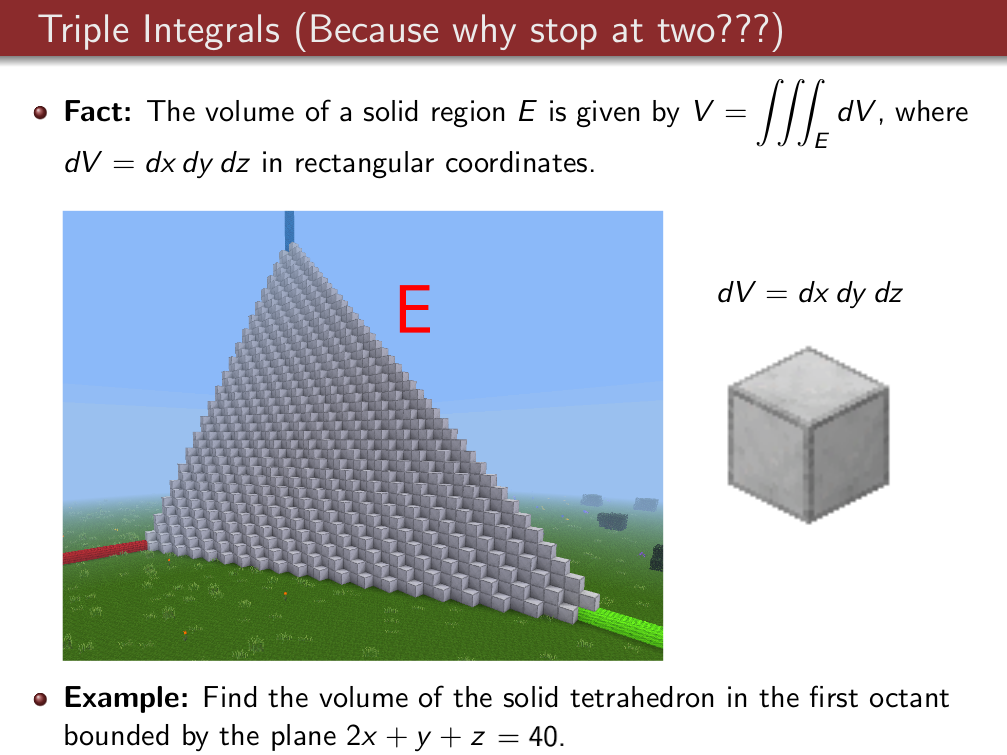
Above, the volume of the tetrahedron in the first octant bounded above by the plane \(2x + y + z = 40\) can be thought of as the sum of many small blocks that fill the solid region. We can keep a running total of the blocks by iterating over the region; for example:
- Pick a location \((x,y)\) in the base of the solid in the \(xy\)-plane, which is the triangular region bounded by \(x=0\), \(y=0\), and \(y=40-2x\). That is, the set of points \[ \{ (x,y) : 0 \leq x \leq 20, 0 \leq y \leq 40-2x \}. \]
- At the chosen \((x,y)\) in the base, stack blocks vertically from \(z=0\) up to a height of \(z=40-2x-y\).
- Repeat this process for all \((x,y)\) in the base region, and keep a running total of the block volumes as you go.
Activity: Building an Elliptic-Cylindrical Structure in Calculus III
On the last day of my Fall 2019 Calculus III class, we built this elliptic-cylindrical structure with a roof in the shape of an elliptical dome and a helical staircase.
Based on a rough sketch, we found implicit/parametric equations for the various components, prototyped them in Maple, and then simply copy/pasted the formulas into the MathPlot mod's form interface.
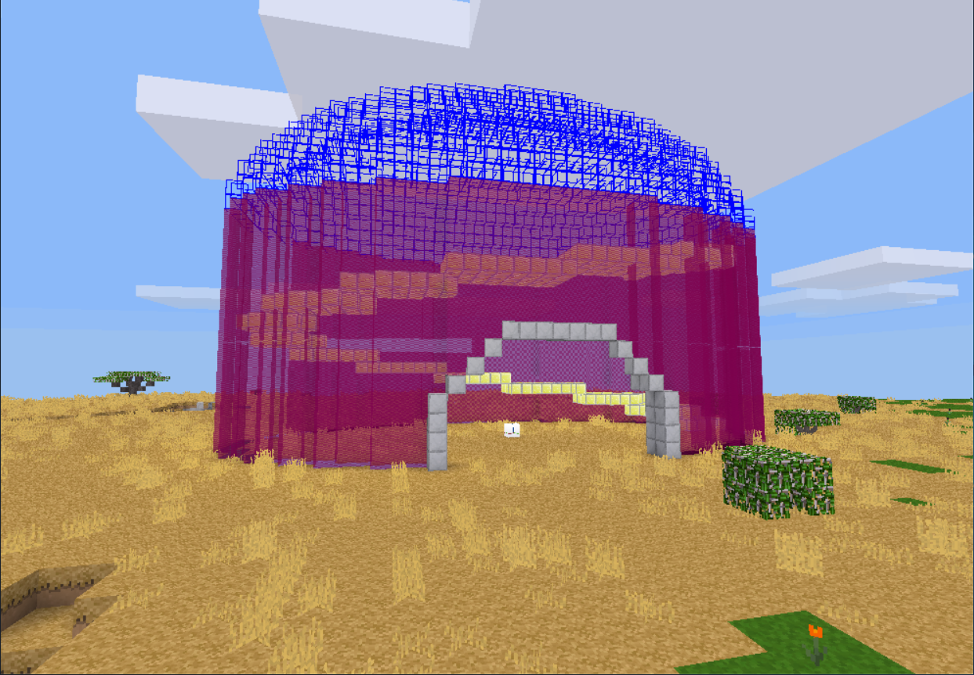
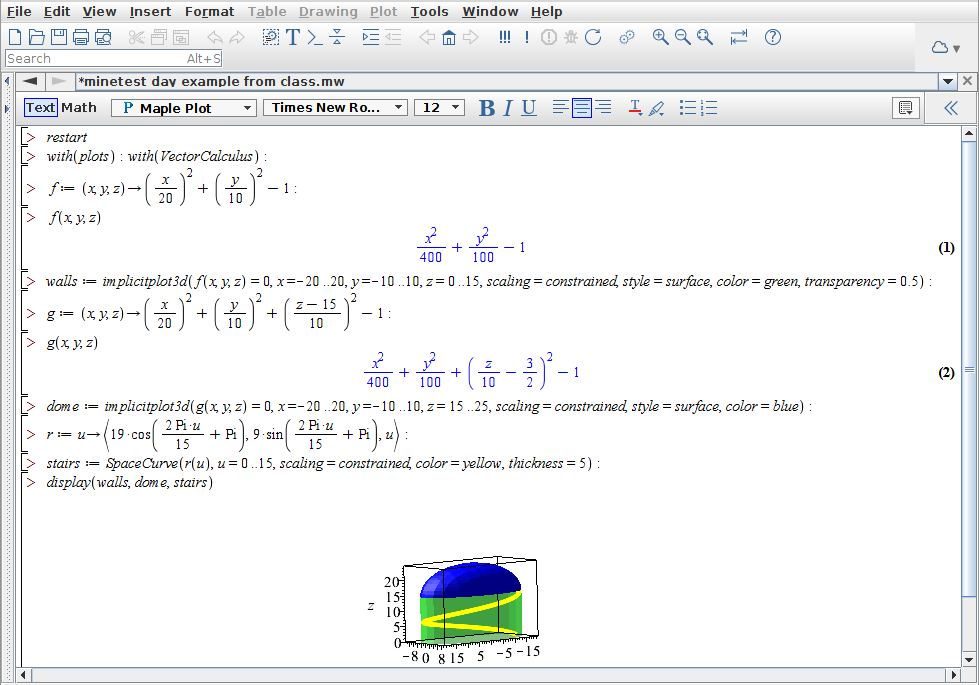
(Prototyping in Maple)
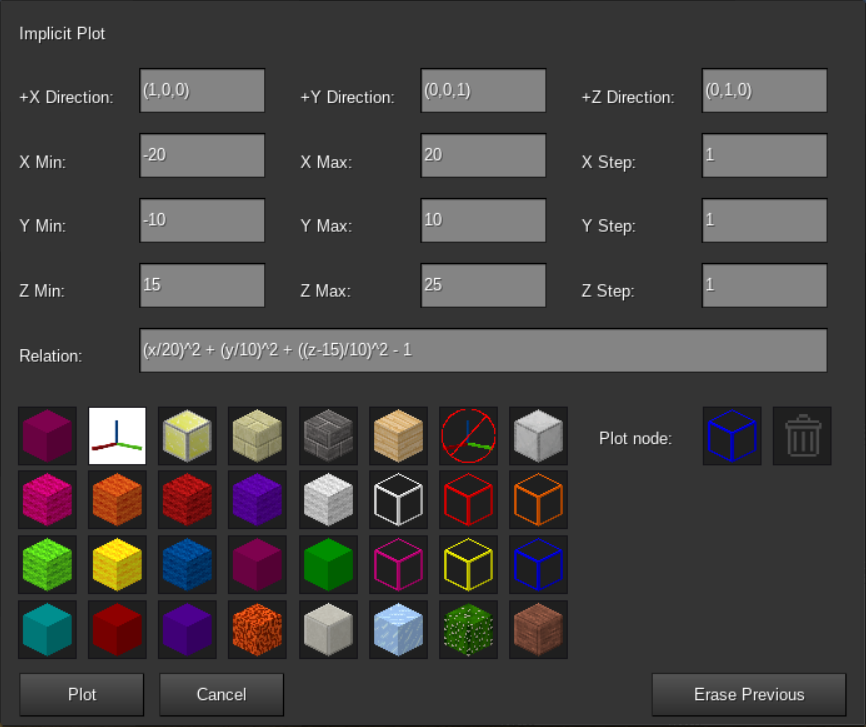
(Populated formspec for plotting the dome)
Activity: Sonia Math Day 2020
Inspired by my Fall 2019 activity in Calculus III, I developed an activity for Rose-Hulman's Sonia Math Day 2020, which is aimed at encouraging high school girls to pursue higher education and careers in STEM fields. Starting from only the Pythagorean Theorem, the activity (worksheet pdf available here) develops distance formulas, equations of circles in \(\mathbb{R}^2\), and equations of cylinders/spheres in \(\mathbb{R}^3\). Then appropriate equations are found and plotted in the game to build a structure with cylindrical walls and spherical dome (see screenshot below).
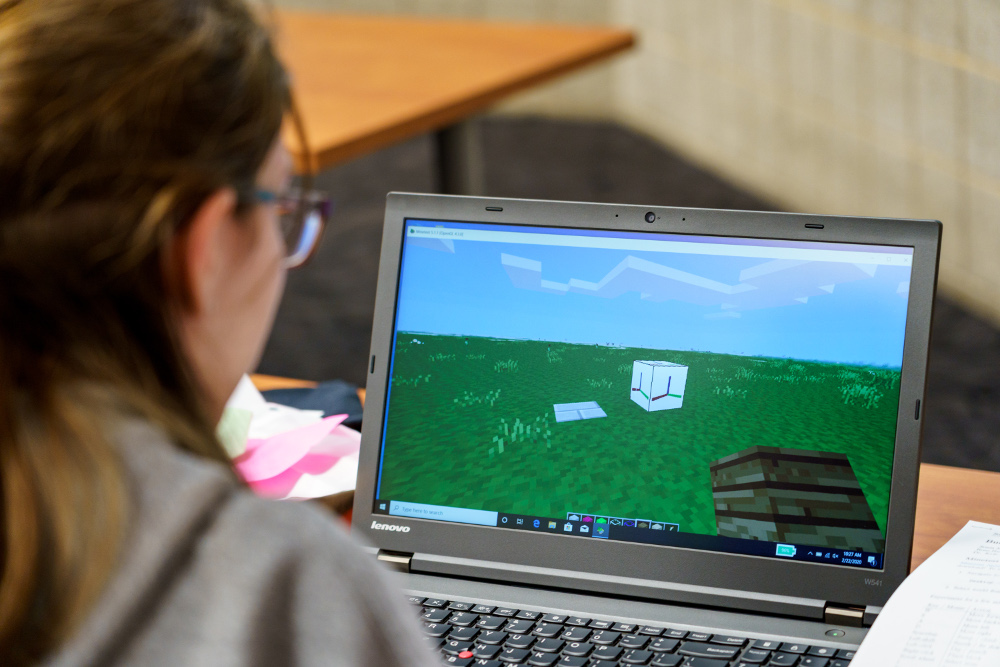
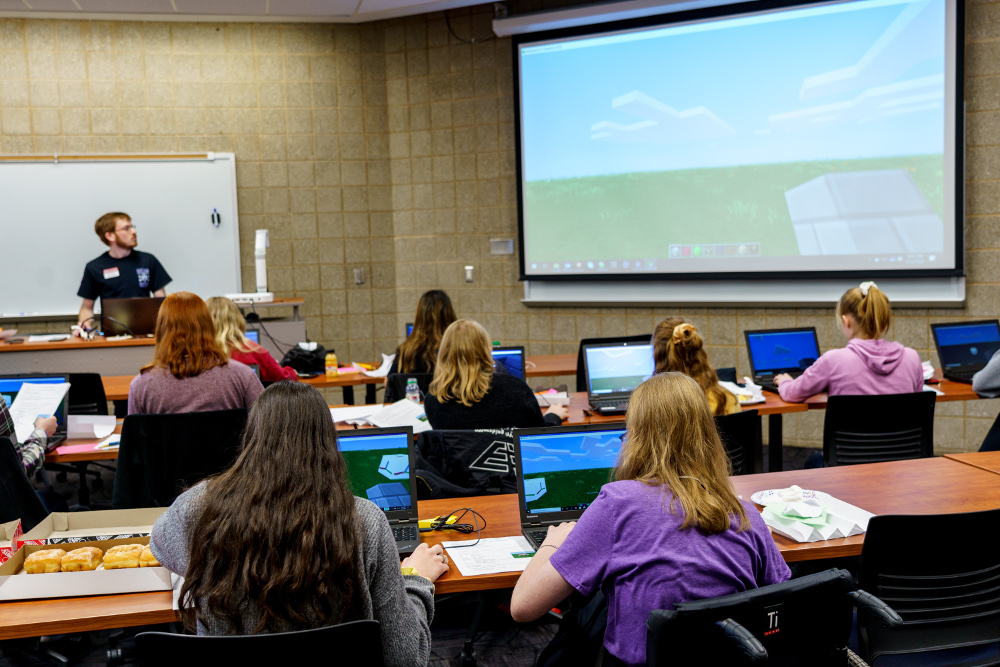
(Photo credit: Rose-Hulman Institute of Technology / David Essex)
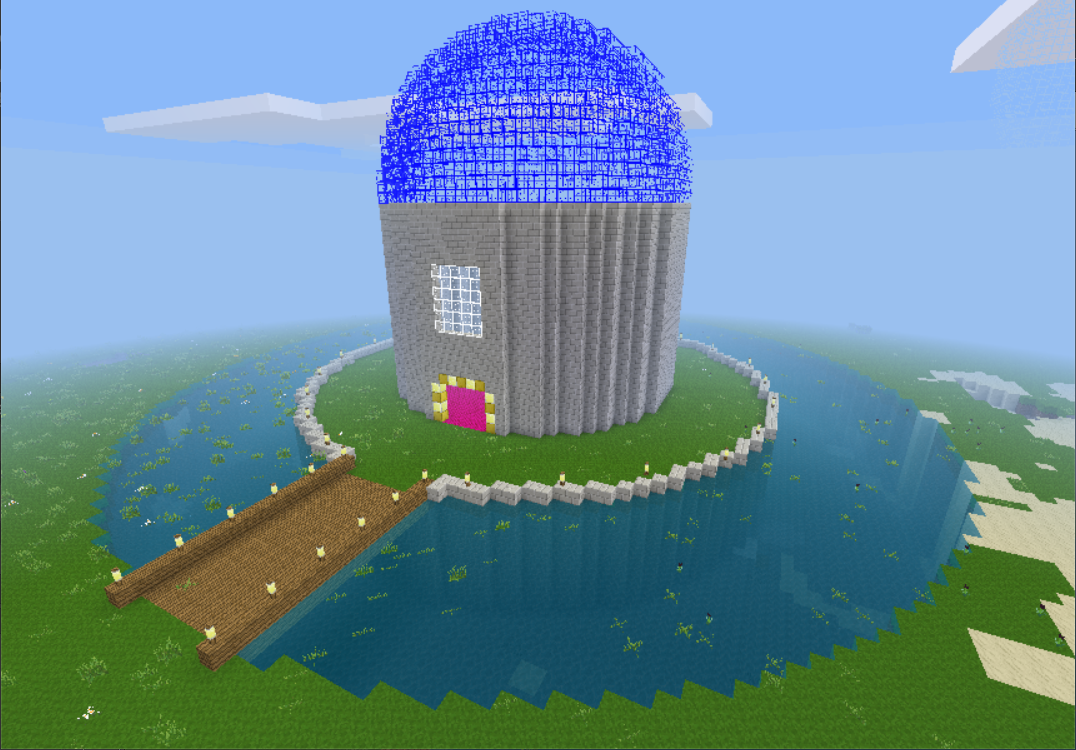
(The moat is a supplemental exercise in the activity worksheet!)

